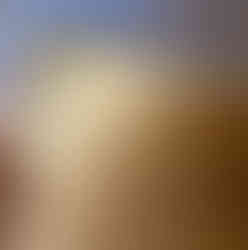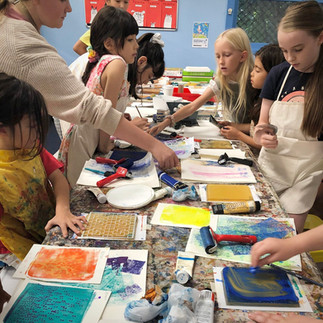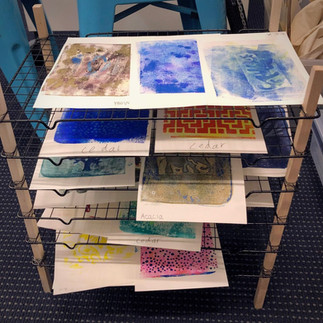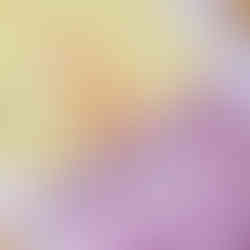During school holidays here in Australia, free workshops for children are held at public libraries. On April 11th, I did a printmaking class at a local library. Since the library is tiny, with limited access to the sink, I wanted to do something that did not require lots of water. So for this (my very first class) one, I decided to do jelly (or gelli) printing and drypoint.
For jelly printing, I prepared the jelly matrix in advance.
RECIPE for Jelly Plates
Makes about 4-5 Jelly Matrix just smaller than A5 size paper.
Gelatine Powder or Agar Agar 196 g
Glycerine 350 ml
Boiling Water 350 ml
Experimental option:
Bosistos Antifungal Solution 1/2 tsp
First choose molds with smooth bottom. I used a non-scratched brownie baking tin and a glass container, just because they were both the right size and smooth bottomed.
Gently mix gelatine/agar agar and glycerine and slowly pour in boiling water. Mix until gelatine is dissolved. Mix in antifungal solution if using. (I am not sure if this would be effective, but I am trying it as an experiment to see how long the jelly plates will last without mould. Last batch I made grew mould when I did not store these in the fridge. My region is warm and very humid.)
Pour into mold. I like my plates to be about 8mm high. 1cm is good, but easy to crack if it's bent. I use a paddlepop stick with a line marked at 8mm when pouring gelatine mix.
I haven't had any problems with bubbles on the bottom surface/printing surface, but if you see too many big bubbles (bubbles inside are fine) or feel the jelly is cooling and thickening too fast, you can warm it up (but don't let it boil) and it'll smooth out. Just make sure to pour into clean molds.
When hardened enough in room temperature, cool in the fridge for half an hour. Take it out of the fridge and insert a butter knife (nothing sharp!) into a corner to lift it up enough to grab with your fingers and pull it out. It is pretty strong. I cut the jelly from brownie tin in half to make them the size I want.
I store them in the fridge in a plastic container with cut plastic file folder sheets in between each jelly plates. These will leave marks on jelly, so thicker material than plastic wrap or sheet protectors are better.
Printing with Jelly Plates
Use: Acrylic paint, gouache, watercolour, stencil, roller, brush, cotton tip/chopstick, textures, etc. In above video, the child on the left is using acrylics, child on the right is using watercolour (undiluted), and they both turned out beautifully. I personally like the look of watercolour, but it can dry out, so you have to be quick to take an impression.
Left: Watercolour/gouache is used. Right: Foam sheet is glued onto toilet paper roll for texture making and printed with acrylic paint.
You should have a sheet or two of spare paper next to you to clean the roller on before paint dries on it. That way you don't need to keep cleaning the roller with water, which will wreck your next print if water is left on the roller. If the paint dries on the Jelly, you can clean it by rolling out a thin layer of paint and pulling it off with paper. At the end of the session, wipe it with paper towel or a cloth wet with water with a little dish soap.
Photos from the library session. They have all gone home with a folder full of beautiful prints. None of them looked the same! That is the beauty of Jelly printing.
The jelly plate shown above has somehow gone bubbly. After cleaning it, I have chopped it and melted in a pot to fix it. My hand made drying rack made of cooling racks lost its leg on the day, and I've discovered it is not so durable when kids are running around, so I will devise another portable rack. What can I do with all the cooling racks?
Something we didn't get to do was magazine transfer. You can actually transfer photos from glossy magazine pages or laser printer print. This only works with acrylic paint, and also depends on the magazine and paint. Not all acrylic paint works. The above somewhat successful prints were done with good quality Liquitex paints actually from 25 years ago! I have recently bought some brands I can get here in Australia, so I'll see which one works best. I can advise that Mont Marte Satin Acrylic does NOT work for jelly printing. It does something really weird on jelly and paper. I will post about paints that works once I have a chance to try the ones I have ordered. In the meantime, I hope you decide to have a go!



























Komentarze